 |
BREGUET XIX BIDON
ZENITH 271 - A. CAIRELLI |

| THE CLOCK
I have not found information about this 271 Zenith movement, it has 2 barrels for 36 hrs power reserve, it has 5 jewels.
A.Cairelli is a historical brand of the italian and international army watchmaker, it has given cronographs to the Regia Aereonautica and to the Italian Air Force, Cairelli equiped Fiat, Caproni, Savoia-Marchetti and others, the aircraft was built in 1928 so the clock is previos that year.
I do not know how a swiss movement sold by italian trade mark A. Cairelli ends in a fench plane built in Spain, as this aircraft was no a serial one it was modified in Spain anything is possible, nevertheless in the cockpit of the plane there is no clue that the clock was modified or adapted as i have seen in others airplanes.
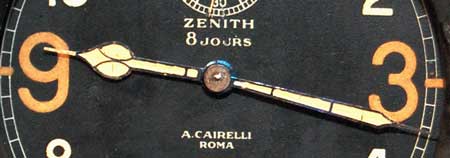
|
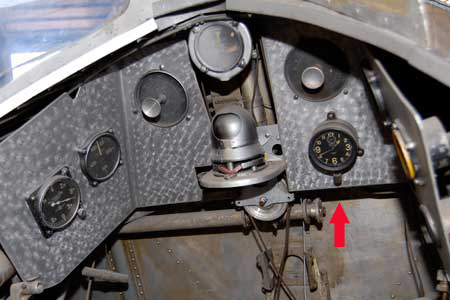 |
 |
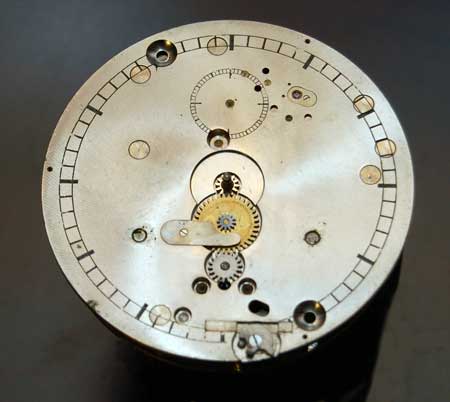 |
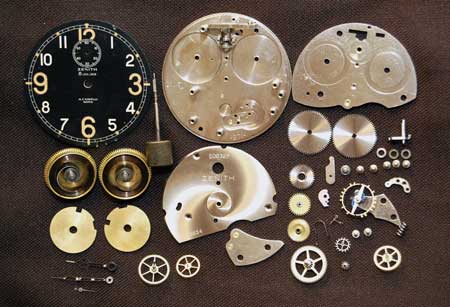 |
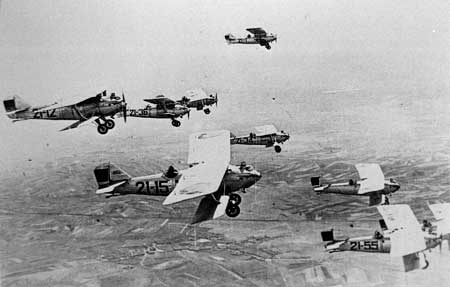 |
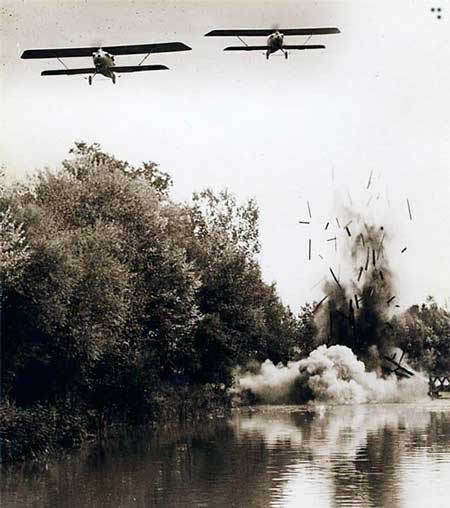 |
THE PLANE
In 1923 it was held at Cuatro Vientos aerodrome (Madrid, Spain) a military aircraft competition from with, the French Breguet 19 A.2 was selected as the light bomber, so the first 30 were ordered from the French manufacturer Breguet, and a contrac to built it in spain under licencse the following 203, CASA Construcciones Aeronauticas SA was founded for that.
The Breguet XIX is a sexquiplane (biplane with the lower wing smaller than the upper one) it could carry four internak machine guns with a capacity for 400 Kg of bombs and another 400 Kg under the lower wing. It was used by both sides in the Spanish Civil war and was in service until 1937.
CASA manufactured some modified units with special tanks of 2.900 liters, thus giving rise to the TR BIDON and SUPER BIDON VERSION WITH 5.179 LITER, both called the GRAND RAID model.
|
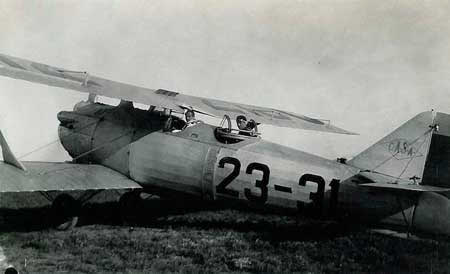 |
THE COCKPIT
The photographs correspond to the Jesus del Gran Poder that is in the Museo Del Madrid and is the TR Bidon model. |
 |
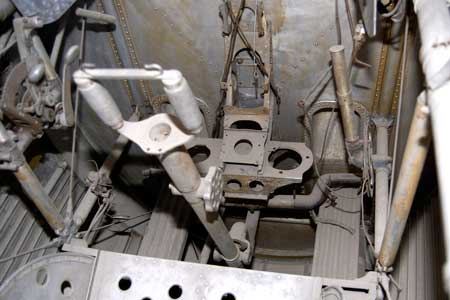 |
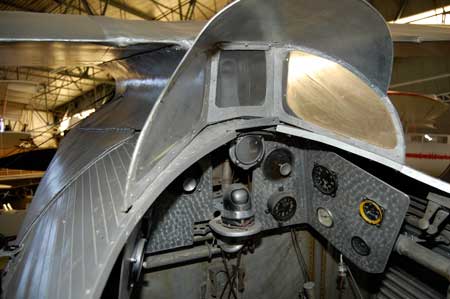 |
| |
THE GREAT RAIDS |
The Breguet XIX was chosen for a series of flights to the former colonies as well as:
-
MANILA was the ELCANO squadron of 3 planes, one with Gonzalez-Gallarza and Loriga, it took 31 days.
-
BATA GUINEA ECUATORIAL Cipriano Rodriguez and Carlos de Haya, both had the speed record on a 5,000 and 2,000 km circuit..
-
BAHIA BRASIL (although the destination was Rio de Janeiro), Jimenez and Iglesias aboard the JESUS DEL GRAN POWER.
-
LA HABANA CUBA Barberan y Collar on board of the CUATRO VIENTOS.
|
THE "JESUS DEL GRAN PODER"
On March 30, 1928, the Breguet XIX TR No. 72 was blessed in Tablada with the name "Jesus of the Great Power". He acted as godmother H.M. Queen Victoria Eugenia.
Piloted by Captains Jimenez and Iglesias On March 24, 1929, the "Jesús del Gran Poder" took off from Tablada towards Rio decorated on the fuselage with drawings by Martínez de León and Juan Lafita alluding to its Andalusian capital, heading towards the west coast of Africa which they followed to Dakar, where they entered the ocean |
 |
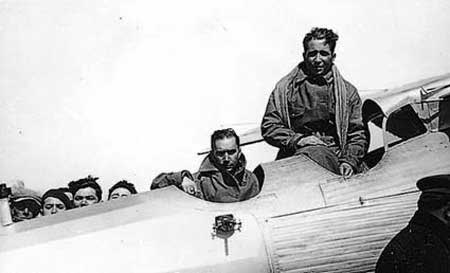 |
They encountered headwinds along the way and once they had passed the equator the trade winds from the S.E. that more than helping they pushed the plane towards the North. Thus they found the Natal lighthouse on the nose and followed the American coast, using more fuel than desired, so when they reached Bahia they had to land due to exhaustion. The record had not been broken.
Afterwards, the "Jesus of the Great Power" made a Latin American tour continuing to Buenos Aires and going up the western coast of South America to Panama and ending the flight in Cuba. There the plane was dismantled and taken aboard the cruise ship "Almirante Cervera" which deposited it in Cádiz, where, once assembled, it took off from Victoria beach to Seville and later Cuatro Vientos in Madrid. |
 |
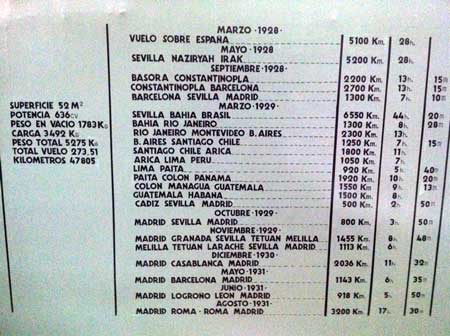 |
CUATRO VIENTOS |
 |
In 1932, Captain of Engineers Mariano Barberán y Tros de Ilarduya, director of the Cuatro Vientos Observer School and hero of the Moroccan War, having acquired a recognized prestige as a navigator in the preparation of the flight of the Plus Ultra, conceived the idea of make a non-stop flight from Spain to the Antilles.
Cavalry lieutenant Joaquín Collar Serra, professor at the Alcalá de Henares Hunting School, was appointed as first pilot, and Barberán himself was appointed as pilot and navigator. To act as ground assistance mechanic, Sergeant Modesto Madariaga was chosen, a deep knowledge of the device that was to be used in the flight. |
The Breguet XIX GR (Gran Raid) Super-Drum was manufactured especially for the occasion, further expanding the capacity of its large tank, which given its position in the center of the structure was almost equivalent to completely redesigning the aircraft. They carried 5,000 liters of gasoline in 8 tanks and 200 of oil. It had a closed cockpit and a very complete flight instrument panel with engine instruments, two compasses, an altimeter, variometer, clock, flight integral with anemometer, turn and tilt indicator.
On June 8, 1933, they took off from Cuatro Vientos to place the plane in Tablada (Seville), where after careful meteorological preparation, they departed on June 10, 1933 at 04:40. They used 1,500 m of runway for takeoff, almost all of Tablada's.
|
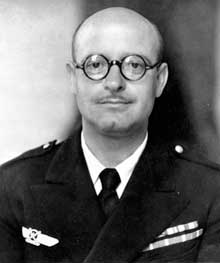 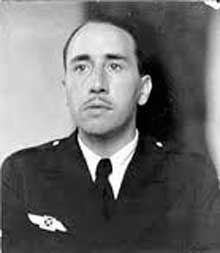 |
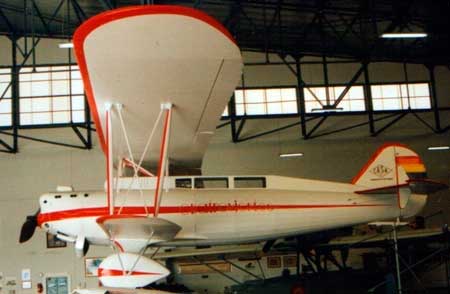 |
The crossing of the central Atlantic was the greatest distance flown up to that time over the sea. They followed the planned route with minimal deviations: Tablada (Seville), Madeira, San Juan (Puerto Rico), Guantánamo and Camagüey, where they arrived on June 11 at 8:45 p.m. local time after a 39-hour flight and 7,320 km.
The journey to Mexico included a 1,920 km flight that was scheduled to take about 12 hours. On June 20, they took off from Havana at 8:45 a.m. towards Mexico City and were seen over Carmen at 11:35 a.m., near the city of Villahermosa in Tabasco. From this position they disappeared. |
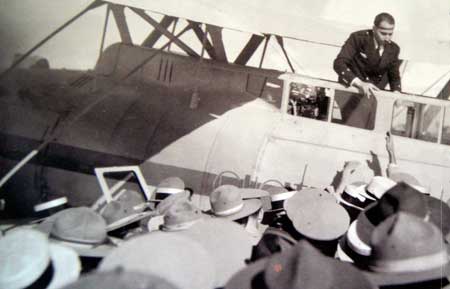 |
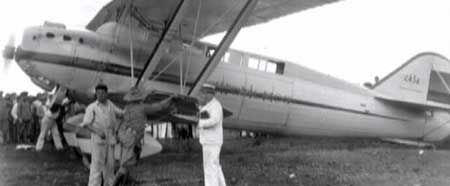 |
The governments of Mexico and Guatemala carried out numerous search operations and despite the efforts made, they could not find the place where the device fell, a mystery that has given rise to numerous theories and speculations to this day, creating a halo of mystery and legend about what was the end of the Cuatro Vientos and its crew.
Among the most widely considered hypotheses are that a storm forced the crew to carry out a forced seizure in the Mazateca mountain range (Oaxaca) or that they fell into the sea. |
Bold four winds your excellent day
In pursuit of the route that Columbus traced
In the brief lullaby of a beloved homeland
That by giving us his language, his blood gave us
You left Seville a gypsy of loves
Wrapped in the mists of dawn
And the next day, your harsh rumors
In Camagüey they vibrated at dusk |
 |
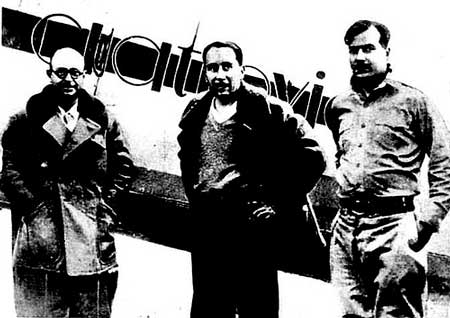 |